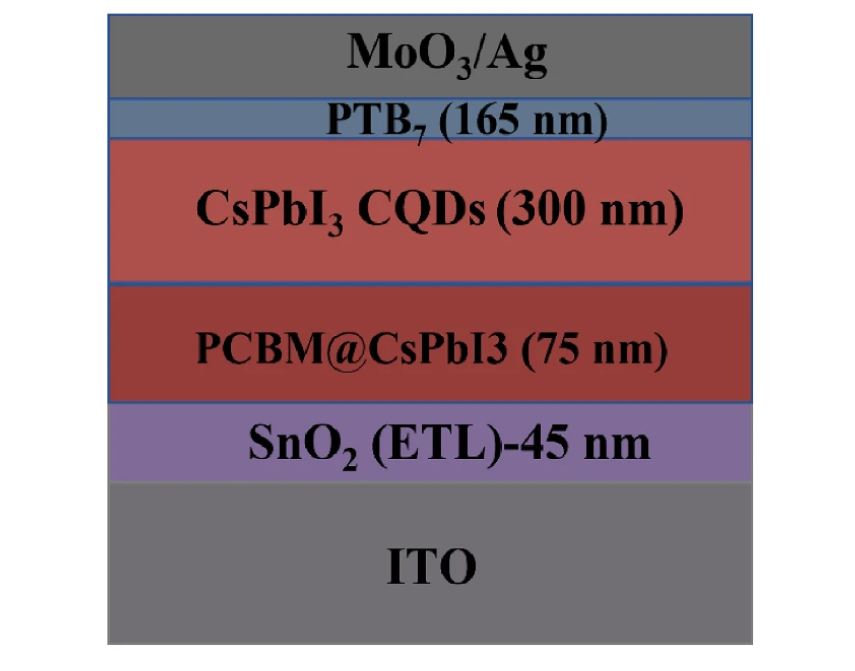Quantum dots, tiny particles of semiconductor that can carry a charge, made from various materials, have been investigated as possible solar cell materials. Those based on perovskites have proved particularly attractive to researchers working in photovoltaics, having already demonstrated efficiencies beyond 16%.
With this in mind, a group of scientists led by the Islamic Azad University in Iran has conducted a series of simulations to investigate the potential for colloidal perovskite quantum dot (PQD) solar cells to achieve higher efficiencies than those reported to date. They sought to assess, in particular, if the properties of the perovskite absorber can be varied and modulated to enhance the cell performance.
The research team conducted a series of simulations on a 14.61%-efficient PQD cell based on all-inorganic cesium-lead iodide (CsPbI3) perovskite, which is also known as black perovskite.
They assumed a cell configuration based on an indium tin oxide substrate, an electron transport layer (ETL) relying on tin(IV) oxide (SnO2), a CsPbI3 absorber mixed with a layer of phenyl-C61-butyric acid methyl ester (PCBM) and a CsPbI3 absorber mixed with the QDs. It also included a precursor film made of PTB polymer, molybdenum trioxide (MoO3), and gold (Au).
In the simulations, the research group modified the CsPbI3 properties by considering the material ratio, the deposition processes used, a range of different treatments, the use of nanoparticles such as graphene, and the utilization of stacked deposition with different sandwich materials.
Popular content
The analysis showed that the absorber layer materials must have an energy bandgap between 1 eV and 1.7 eV, as well as an electron affinity of 3.7 eV and 4 eV. It also assessed the effect of electron and hole mobility on cell performance and found that hole mobility has a significant impact.
“For fabrication of QD solar cells with high efficiency we need an absorber layer with high mobility,” the academics stated, adding that the ideal thickness of the perovskite absorbers should be between 100 nm and 350 nm.
An optimized version of the analyzed solar cell showed a potential power conversion efficiency of 29.88%. They said their results may help other researchers to work on CsPbI3 materials for the achievement of highly efficient, stable, large-scale, and flexible PQDs solar cells.
They presented their findings in the study “Comprehensive guidance for optimizing the colloidal quantum dot (CQD) Perovskite solar cells: experiment and simulation,” published in scientific reports.
This content is protected by copyright and may not be reused. If you want to cooperate with us and would like to reuse some of our content, please contact: editors@pv-magazine.com.



By submitting this form you agree to pv magazine using your data for the purposes of publishing your comment.
Your personal data will only be disclosed or otherwise transmitted to third parties for the purposes of spam filtering or if this is necessary for technical maintenance of the website. Any other transfer to third parties will not take place unless this is justified on the basis of applicable data protection regulations or if pv magazine is legally obliged to do so.
You may revoke this consent at any time with effect for the future, in which case your personal data will be deleted immediately. Otherwise, your data will be deleted if pv magazine has processed your request or the purpose of data storage is fulfilled.
Further information on data privacy can be found in our Data Protection Policy.